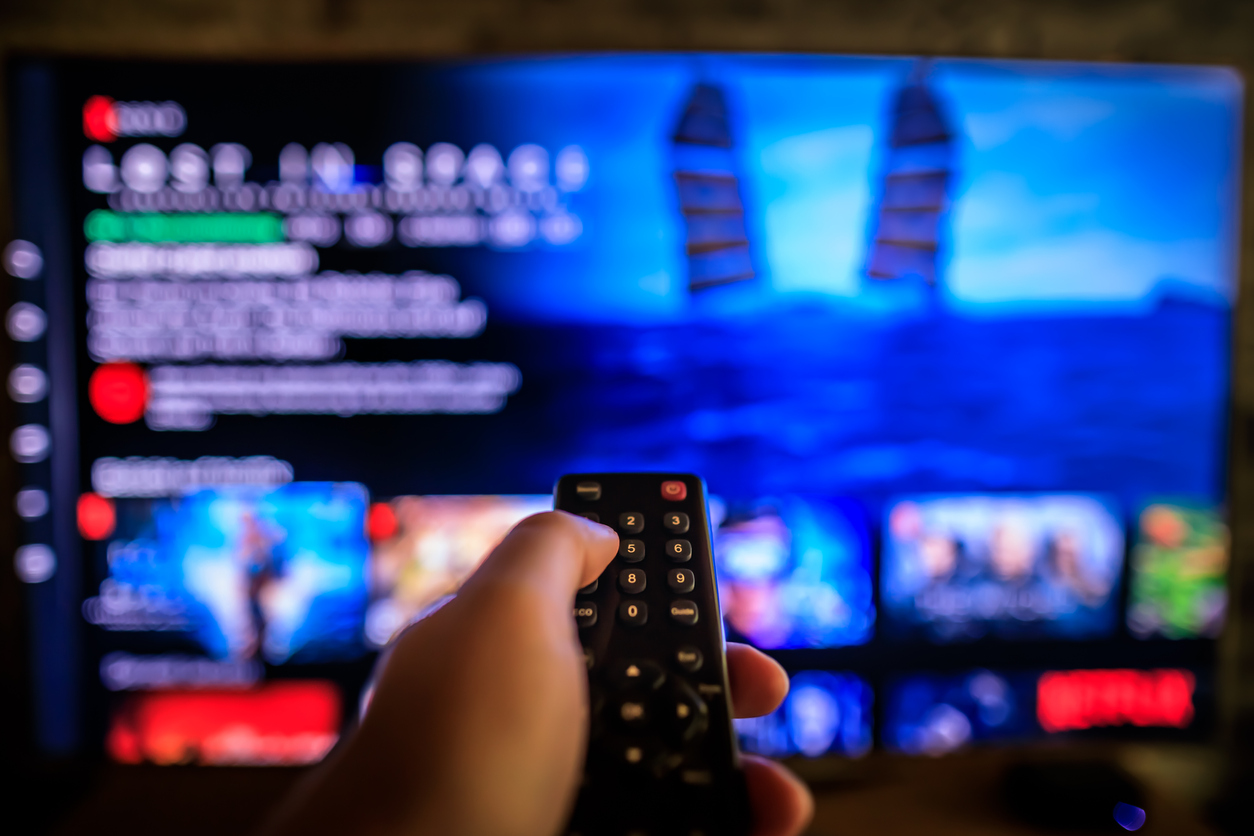TiVo: Viewing Time Stagnates But Number of Video Services Used Jumps
The number of video services used hit double-digits for the first time, further fragmenting the streaming landscape as churn increased

SAN JOSE, Calif.—A major new study of consumer video trends by TiVo indicates that the video and streaming industries face a number of pain points as total viewing time stagnates and the number of streaming video services being used continues to rise, further fragmenting audiences for advertisers and the sources of content for viewers.
Overall the average number of services used jumped from 8.9 in Q4 2021 to a record 11.6, the first time they had moved into double-digital levels. Meanwhile, churn rates continued to rise, with 26.6% of respondents dropping a SVOD service over the last 6 months, an increase of over 8.0% year over year, TiVo said.
As the number of services being used by consumers jumped, viewing slightly dropped from 4.5 hours in Q4 2021 to 4.4 hours in Q4 2022, indicating that streamers will have a harder time standing out from the pack and that cost conscious consumers are frequently dropping subscription services (churning).
The data showed that people across all age groups increased the services they used, with the number of services growing even among the less tech savvy 77+ year-olds (up 23.3% to 5.1) and baby boomers (up 21.9% to 6.2).
The most rapid growth was among Gen X (up 47% to 12.2), followed by millennials (up26.3% to 16.3). Interestingly, Gen Z showed the slowest rate of increase in the number of services they used (up 10.8%) to 12.7.
Upper income groups used the most services with homes earning more than $200,000 using on average 21.1 services.
Much of the growth was in the free AVOD and FAST channel area, where the average number of services jumped by 69% from 2.4 in Q4 2021 to 3.9 services in Q4 2022.
Get the TV Tech Newsletter
The professional video industry's #1 source for news, trends and product and tech information. Sign up below.
But SVOD services also grew, increasing from 6.5 used on average in Q4 2021 to 7.6 in Q4 2022.
SVOD services also continue by far to dominate the streaming landscape. The number of SVOD services used is still nearly double that of free services and their share of viewing is significantly higher than free services, with SVOD accounting for 30.1% of viewing (down from 31.$% in Q4 2021), compared to 23.5% for the free services (more than double the 10.3% share in Q4 2021).
The new TiVo data shows that pay TV viewing continued to decline, dropping from 38% in Q4 2021 to 32.1% in Q4 2022. That indicates that some of the growth in the number of streaming services being used can be traced to cord cutting.
While local broadcasters have been slow to embrace streaming and continue to be hurt by the collapse of the pay TV industry in terms of their retransmission fees, the report highlighted some encouraging trends for them.
Nearly one quarter of all viewing time (23.4%) being spent on local content, TiVo reported. Much of this is still done via the declining pay TV ecosystem (with pay TV services accounting for 49.6% of local content viewing and vMVPDs 18.6%). But 10.4% were viewing local content via an antenna and 6.4% was being done on a free streaming channel as more FAST services launch live linear local services, TiVo reported.
The report also found some notable shifts in consumer spending. Pay TV bills dropped from $124.40 in Q4 2021 to $119.91 in Q4 2022. Average spending on SVOD services increased to $49.08, from $42.03 in Q4 2021 and streaming sports subscription services increased to $48.28 in Q4 2022, up from $41.89 a year earlier.
Despite economic worries, overall spending on entertainment rose by nearly $20 to $189.38 in Q4 2022.
But economic worries about spending do seem to be accelerating the shift to free services, TiVo’s researchers reported.
According to the report, adoption of totally free video services, including AVOD and FAST, has grown by almost 70.0% year over year – reflecting that these services continue to capture a greater share of the market. 64.0% of consumers now utilize at least one AVOD or FAST service, driven largely by millennial audiences, up from 60.0% year over year.
The number of choices continues to benefit consumers, but it has led to content discovery becoming even more complex and varied, the report noted. The survey also found that people still mostly rely on commercials and word of mouth to inform them of other TV shows and movies they’d like.
Content discovery continues to be a pain point for the industry and consumers, though only 8.7% of the respondents said they were unhappy with the recommended content. Another 34.4% said they were indifferent to the recommendations and 55.9% said they were happy with them.
“We’re at an inflection point in the digital entertainment industry as consumers seek to take advantage of the flood of content choices and service types available but now wrestle with the paradox of choice.” said Scott Maddux, VP of global content strategy and business at Xperi, which owns TiVo. “Discovery shouldn’t be a chore, and it is imperative that entertainment platforms and video technology providers prioritize simplicity for consumers in order to make discovery and viewing experiences as enjoyable as possible.”
Additional TiVo Video Trend Report highlights include:
- Bingeworthy content: More than half of respondents (53.0%) prefer when the whole season of a TV show is available at once, compared to only 24.7% who prefer episodes to be released one per week. During Q4 there was a strong difference among men and women in consuming content, with women reporting a strong preference for the opportunity to binge a whole season (61.0%), whereas men report a stronger preference for the weekly release schedule (60.0%).
- Generation gap: When examining the increase of video services, there are some glaring differences among service consumption when it comes to age groups. Millennial respondents consumed significantly more than any other age group with an average of 16.3 sources compared to Gen Z with 12.7 sources and Gen X with 12.2 sources.
- Eye on spending: In recent months, respondents appear to be evaluating and adjusting their entertainment spending more often, with around 18.0% saying they currently do so every month or more compared to only 13.0% a year ago.
- Entertainment at home: While the recent pattern of economic inflation has caused 30.0% of respondents to reduce their overall entertainment spending, almost three-quarters of respondents (74.0%) say they’re slightly or much more likely to look for entertainment at home than going out. To support this at-home entertainment, these respondents are investing in their home set-up with one-third purchasing a new TV in the last six months.
TiVo TV Viewership Data includes second-by-second level data captured from set-top-boxes within households across all 210 DMAs in the U.S. The data reflects both live or time-shifted viewership information which is the cornerstone of TiVo’s expertise in TV data processing.
The latest TiVo Video Trends Report surveyed 4,493 adults 18 and older living in the U.S. and Canada during the fourth quarter of 2022 (3,500 US, 993 Canada).
Find more information from the latest Video Trends Report here.
George Winslow is the senior content producer for TV Tech. He has written about the television, media and technology industries for nearly 30 years for such publications as Broadcasting & Cable, Multichannel News and TV Tech. Over the years, he has edited a number of magazines, including Multichannel News International and World Screen, and moderated panels at such major industry events as NAB and MIP TV. He has published two books and dozens of encyclopedia articles on such subjects as the media, New York City history and economics.

